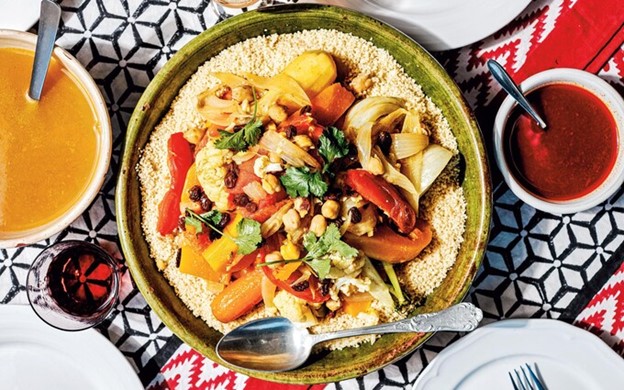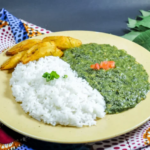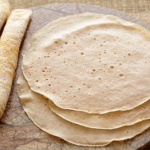North African cuisine is renowned for its vibrant spices, aromatic herbs, and tantalizing flavors. Among the region’s culinary treasures, couscous stands out as a versatile dish that embodies the essence of North African gastronomy. Originating from Berber traditions, couscous has become a beloved staple across countries like Morocco, Algeria, Tunisia, and Libya. This article explores the aromatic flavors of North African couscous, highlighting its diverse ingredients, cooking techniques, and its status as a versatile and beloved dish.
Diverse Ingredients:
Couscous is traditionally made from semolina, a coarse wheat flour. The preparation process involves rolling and steaming the semolina grains until they reach a light and fluffy texture. However, today, couscous is also available in an instant form that requires only a short cooking time.
The versatility of couscous lies in its ability to be paired with various ingredients. Common additions include succulent meats such as lamb, chicken, or beef, as well as an array of fresh vegetables like carrots, zucchini, onions, and tomatoes. The dish is further enhanced with an array of aromatic spices, including cumin, coriander, turmeric, cinnamon, and paprika, which infuse the couscous with complex and alluring flavors.
Cooking Techniques:
To prepare couscous, the semolina grains are typically steamed in a special pot called a couscoussier. The pot consists of two compartments, with the lower one used to simmer the stew and the upper one used to steam the couscous. The steam rises from the simmering stew, cooking the couscous grains to perfection. This cooking technique ensures that the couscous remains light, fluffy, and separate.
The stew that accompanies couscous is a vital component of the dish, infusing it with rich flavors. The meat and vegetables are slow-cooked in a fragrant broth, allowing the flavors to meld together. This stew is often characterized by a delicate balance of sweet and savory notes, thanks to the combination of spices, dried fruits like apricots or raisins, and the natural sweetness of caramelized onions.
Versatility in Presentation:
Couscous offers endless possibilities for customization and presentation. It can be served as a main course, with the couscous grains forming a bed for the tender meats and vegetables, which are then generously ladled with the aromatic stew. The dish can also be served with a separate bowl of stew for individuals to pour over their portion of couscous, allowing each person to tailor the flavor intensity to their preference.
Furthermore, couscous can be transformed into vibrant salads by mixing it with fresh vegetables, herbs, and a zesty dressing. It can also be used as a stuffing for vegetables, such as bell peppers or zucchini, creating a unique and flavorful vegetarian option. The versatility of couscous extends beyond savory dishes, as it can also be transformed into sweet desserts by combining it with honey, dried fruits, and nuts.
North African couscous captivates the senses with its aromatic flavors, vibrant colors, and remarkable versatility. Whether enjoyed as a comforting main course, a refreshing salad, or a delightful dessert, couscous showcases the culinary prowess of the region. Its ability to bring together a diverse range of ingredients and spices creates a truly memorable dining experience. So, next time you savor a plate of North African couscous, revel in its aromatic flavors and appreciate the centuries-old tradition that continues to delight palates around the world.








